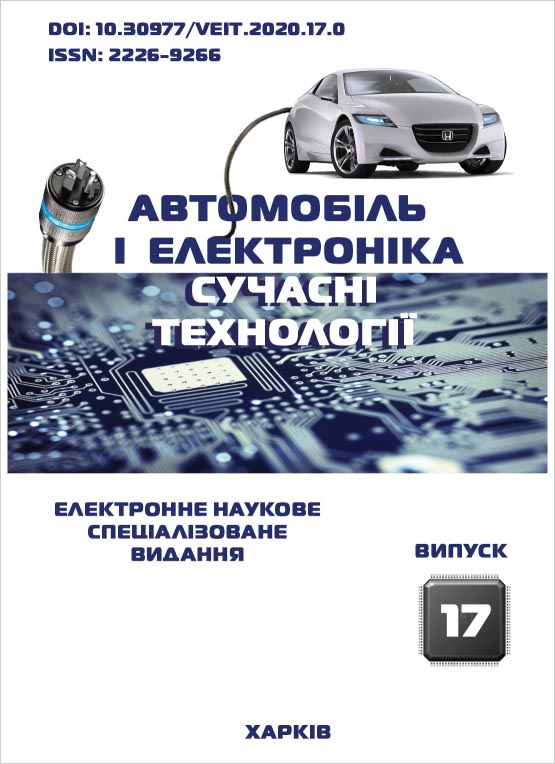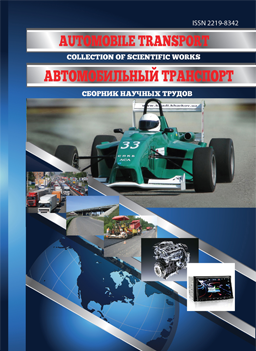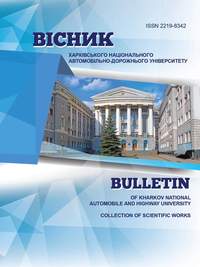Using multiagent systems in transport logis-tics
DOI:
https://doi.org/10.30977/VEIT.2018.14.0.35Abstract
Abstract: The rapid development and diffusion of new technologies implies the need for new high-quality software. including automation of business processes in logistics. In the market of automation of logistics in 2017-2018, there are more and more requests for ERP, TMS, FMS and WMS systems, the demand for robotization, Data Science technology, augmented reality and IoT has increased. To improve the efficiency of business in the field of transport logistics, a detailed study of material (goods and goods) and information flows (data on orders and deliveries, financial data, etc.) is necessary. According to analysts, logistics can be up to 40% of the cost of production. Methods to minimize the cost of logistics are different. The use of information technology in logistics will solve a number of such as: saving time; maximum simplification of work; visualization of work results and identification of weak points in the scheme; reduction of costs. The main task of automation in the field of transport logistics is the calculation of optimal routes, taking into account the set of unequal criteria. The savings are achieved not only due to the reduction of transportation costs, but also due to the optimization of the carrier’s work schedule, which allows avoiding downtime and underloading. The scenario of the decision support system considered in this article will include several types of artificial agents such as transport agents and transport service user agents. Each agent-user of transport services receives data on the geography of transportation, composition of the cargo and financial conditions into the general information space, and periodically requests a proposal (services for transportation) from all agents-carriers known to it. When the offer is received, the transport service user agent accepts it and issues a freight order. If several transport agents provide transport service offers to the user agent, it accepts the best of them. Each carrier agent continuously listens to requests from transport service user agents. Upon receipt of a request for transportation, carrier agents check their orders and, based on a general list of orders, can form the best route for transportation. If the conditions for the implementation of a specific order do not meet the requirements, then the order is rejected. After completing the order for transportation, it is removed from the general list. Goal: Determination of the system architecture, analysis of modern software environments for the development of multi-agent systems, description of the behavior of artificial agents. Methodology: To solve the problem in this article it is proposed to use the technology of multi-agent systems. This approach is based on the use of special autonomous individuals (agents), united in the system. The agent here is a program that is offline capable of performing independent actions in accordance with a given goal. Result: The article analyzes the approach to creating a system for the exchange of information between participants in the transport process in the field of freight traffic using a multi-agent approach. Analyzed tools for building agent systems. Issues related to the peculiarity of the organization of interaction between intelligent agents are considered. Originality: the use of agent-based approach to solve the problem of information interaction of participants in the transport process. Practical value: the possibility of developing a software product to solve problems of the organization of transportation of goods.
Keywords:
artificial agent; transportation; transport logistics decision support systems.
References
Namiot D.E., Sukhomlin V.A., Sharghalin S.P. (2016). Software Programnie agenti v ERP systemach [Software Agents in ERP Systems]. International Journal of Open Information Technologies ISSN: 2307-8162 vol. 4, no. 6th. [in Rusian].
Cummings M., Haag S., McCubbrey D. (2003). Management information systems for the information age.
Ristoski P., Paulheim H. (2016). Semantic Web in data mining and knowledge discovery: A comprehensive survey. Web Semantics: Science, Services and Agents on the World Wide Web.
Namiot D. (2015). Twitter as a transport layer platform. Artificial Intelligence and Natural Language and Information Extraction, Social Media and Web Search FRUCT Conference (AINL-ISMW FRUCT), 2015. – IEEE.
Stallings W. (1998). SNMP, SNMPv2, SNMPv3, and RMON 1 and 2. – Addison-Wesley Longman Publishing Co., Inc.
Namiot D., Sneps-Sneppe M. (2014). On software standards for smart cities: API or DPI. ITU Kaleidoscope Academic Conference: Living in a converged world-Impossible without standards?, Proceedings of the 2014. – IEEE, 2014. 169-174.
FIPA Retrived from: http://www.fipa.org (accessed: 23.12.2018).
JADE Retrived from: http://jade.tilab.com/ (accessed: 23.12.2018).
Fabio Bellifemine, Giovanni Caire, Tiziana Trucco (TILAB, formerly CSELT), Giovanni Rimassa (University of Parma) JADE programmer’s guide. Retrived from: http://jade.tilab.com/doc/ programmers guide.pdf (accessed: 23.12.2018).
Посилання відповідно до ДСТУ
Намиот Д. Е., Сухомлин В. А., Шаргалин С. П. Программные агенты в ERP системах. Journal of Open Information Technologies ISSN: 2307-8162 vol. 4, no. 6, 2016.
Cummings M., Haag S., McCubbrey D. Management information systems for the information age. – 2003.
Ristoski P., Paulheim H., Semantic Web in data mining and knowledge discovery: A comprehensive survey. Web Semantics: Science, Services and Agents on the World Wide Web. – 2016.
Namiot D. Twitter as a transport layer platform. Artificial Intelligence and Natural Language and Information Extraction, Social Media and Web Search FRUCT Conference (AINL-ISMW FRUCT), 2015. – IEEE, 2015. – С. 46-51.
Stallings W. SNMP, SNMPv2, SNMPv3, and RMON 1 and 2. Addison-Wesley Longman Publishing Co., Inc., 1998.
Namiot D., Sneps-Sneppe M. On software standards for smart cities: API or DPI . ITU Kaleidoscope Academic Conference: Living in a converged world-Impossible without standards, Proceedings of the 2014. – IEEE, 2014. – С. 169-174.
FIPA URL: http://www.fipa.org (дата звернення 23.12.2018).
JADE URL: http://jade.tilab.com/ (дата звернення 23.12.2018).
Fabio Bellifemine, Giovanni Caire, Tiziana Trucco (TILAB, formerly CSELT), Giovanni Rimassa (University of Parma) JADE programmer’s guide URL: http://jade.tilab.com/doc/ programmers guide.pdf (дата звернення 23.12.2018).
Downloads
Published
How to Cite
Issue
Section
License
Copyright (c) 2021 Сергей Викторович Пронин

This work is licensed under a Creative Commons Attribution 4.0 International License.
Автори, які публікуються у цьому журналі, погоджуються з наступними умовами:
1. Автори залишають за собою право на авторство своєї роботи та передають журналу право першої публікації цієї роботи на умовах ліцензії Creative Commons Attribution License, котра дозволяє іншим особам вільно розповсюджувати опубліковану роботу з обов'язковим посиланням на авторів оригінальної роботи та першу публікацію роботи у цьому журналі.
2. Автори мають право укладати самостійні додаткові угоди щодо неексклюзивного розповсюдження роботи у тому вигляді, в якому вона була опублікована цим журналом (наприклад, розміщувати роботу в електронному сховищі установи або публікувати у складі монографії), за умови збереження посилання на першу публікацію роботи у цьому журналі.
3. Політика журналу дозволяє і заохочує розміщення авторами в мережі Інтернет (наприклад, у сховищах установ або на особистих веб-сайтах) рукопису роботи, як до подання цього рукопису до редакції, так і під час його редакційного опрацювання, оскільки це сприяє виникненню продуктивної наукової дискусії та позитивно позначається на оперативності та динаміці цитування опублікованої роботи.








